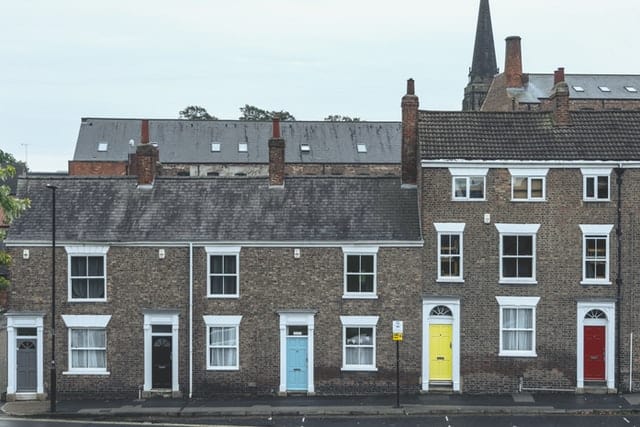
Damp Inspection in London
What To Expect When You Book a Damp Inspection
Damp is a common problem in British properties due to the cold and wet climate. While new properties are fitted with a damp proof course and other barriers are there to prevent damp from forming and causing problems within the property, many older homes do not have these measures in place and are therefore more susceptible to damp issues. If you are in the process of purchasing a new property or have recently bought an older home, it’s worth considering getting a damp inspection carried out, which will ensure that you have all the information that you need in terms of any damp problems that are currently present in the home and any risks of damp that might impact on you in the future.
Why Get a Damp Inspection?
While a homebuyer’s survey will cover damp problems if you are in the process of buying a home, an additional damp inspection might be recommended in order to enable you to get all the information that you need about the damp problems that you will be dealing with, recommendations for repairs, and the estimated cost. If damp problems have been identified in your homebuyer’s survey, your surveyor might recommend having a damp inspection carried out in order to ensure that you are as informed as possible about past, present, and potential future problems. In addition, you may want to have a damp inspection carried out in a property that you already own if you have noticed any signs of damp in the property or any high-risk areas that have the potential to lead to damp in the future. Getting the survey carried out allows you to make an informed decision about future repairs and ensures that you are aware of any hidden damp problems that might not have been immediately obvious, allowing you to repair them before they worsen and become more dangerous and costly to fix.
What is a Damp Survey?
A damp survey is a thorough inspection of the property that is carried out with the purpose of spotting any issues with damp or potential damp leaks in the home. It is carried out by potential buyers to ensure that the property is at a suitable standard and that there are no hidden damp problems that might be costly for them to repair in the future. If you already own a property, having a damp survey carried out can be a wise idea since this will help you ensure that you are fully aware of any problems with the property before they get worse. Since damp will only worsen over time, getting the inspection carried out as early as possible is the best way to save money in the future, along with avoiding more serious issues like structural damage, wet rot and mould in your current or potential home.
What to Expect from a Damp Inspection London?
First of all, get recommendations from other homeowners or your surveyor for a damp proofing company that is trustworthy and gets good results. Once you have found the damp proofing company that you’d like to work with, you will need to arrange a date for the specialist to carry out the inspection of the property. If you are in the process of buying the home, arrange this with the current owners since they will need to ensure that the surveyor has access to all areas of the building where damp could potentially be present, including behind the furniture, in the attic or loft, and in the crawl space or under the floorboards.
The specialist will have some questions to ask the current owner of the home, whether this is yourself or the seller. This will usually include questions about any damp problems that have been noticed so far, if any damp issues have been noticed and repaired in the property in the past, and if any signs of damp have appeared or worsened recently. If you are in the process of purchasing a property and have had a homebuyer’s report carried out that recommended a further damp inspection, the surveyor may want to see a copy of the report so that they can learn more about the damp issues that came up in the survey, where they are located, and how severe they are.
Once this information has been gathered, your surveyor will carry out a thorough inspection of the home focusing on any key areas where damp has already been identified. They will need access to all areas of the property to look for any potential damp issues and focus on previously highlighted areas. Devices such as a damp meter might be used to help them identify any signs of damp that are not immediately obvious to the naked eye, including damp behind the internal walls or damp that has been recently painted over. They will likely also need to access the property’s damp proof course to check it for any signs of faults, inefficiency or bridging.
Once the inspection has been carried out, you will receive an extensive report on the findings via post or email. The report will usually be written in language that is easy for you to understand as a non-professional and highlights any areas of damp that have been found, how severe they are, if they have led to any further problems, and recommended repairs. In some cases, you may be provided with information on the potential cost of the necessary repairs and the surveyor might provide you with a priority list so that you can decide which issues need to be tackled first.
How to Prepare for a Damp Survey:
If you are having a damp survey carried out in preparation to sell your home, for example, then it’s worth preparing for the inspection and carrying out work on any areas where you have noticed damp in order to ensure that they pass. While damp proofing professionals can help you repair damp areas of your property and prevent the issues from reoccurring in the future, the good news is that many instances of damp can also be easily dealt with at home. If you have noticed damp appearing on your walls, the first thing to do is ensure that it is not the result of more serious problems like leaks or inefficient gutters, which will need repairing to prevent future damp. Walls that have been affected by damp should be thoroughly cleaned with soapy water or an anti-mould solution. You will then need to leave the walls for a few days to a few weeks to allow them to fully dry before redecorating. Before painting or wallpapering, you may need to re-sand the walls to achieve a flat finish again. Once you have done this, consider treating the wall with an anti-damp paint, which you can get from any good DIY store, before applying your desired wallpaper or interior emulsion.
Spotting Damp in the Home:
While the damp inspection will help you become aware of any signs of damp in your home that you had not otherwise noticed, you can help the surveyor by checking your home for any potential signs of damp that you can point out to them before they begin. Some of the common signs of damp that you and the surveyor should look out for include:
Staining and Discolouration:
When damp affects the walls of your home, this often leads to discolouration and staining on the walls or ceiling. If you have noticed black, brown, or yellowish patches on the walls and ceilings of your home, damp could be to blame.
Odours:
Damp will often have an earthy and musty odour to it, which is often stronger as the damp becomes more serious. While this might not always be present when the damp is quite new or has not spread seriously, if you have noticed a musty smell around your walls, it could be due to damp.
Mould:
Damp can quickly lead to mould since it provides the perfect environment for mould spores to multiply. Mould is usually easy to identify since it will show up on your walls as black, unsightly spots. Where mould is present, there is usually always some kind of moisture since this is required for the mould to survive.
Allergies and Breathing Issues:
Damp and mould in the home can lead to health problems, including allergies and respiratory problems. If you or a family member has noticed more severe symptoms of asthma at home recently, for example, or you are getting allergy-like symptoms when you are at home, then it’s worth having a damp inspection carried out to ensure that this is not the cause.
Damage to Paint and Wallpaper:
Where damp is present on walls and ceilings, the wallpaper or paint might become discoloured, cracked, or peel as a result of the excess moisture. Woodwork and plaster that has been affected by the damp might also show signs of damage or rot.
A damp inspection is the best way to make sure that you are fully aware of any signs and risks of damp in your home so that you can deal with them as quickly as possible and prevent serious future problems.

